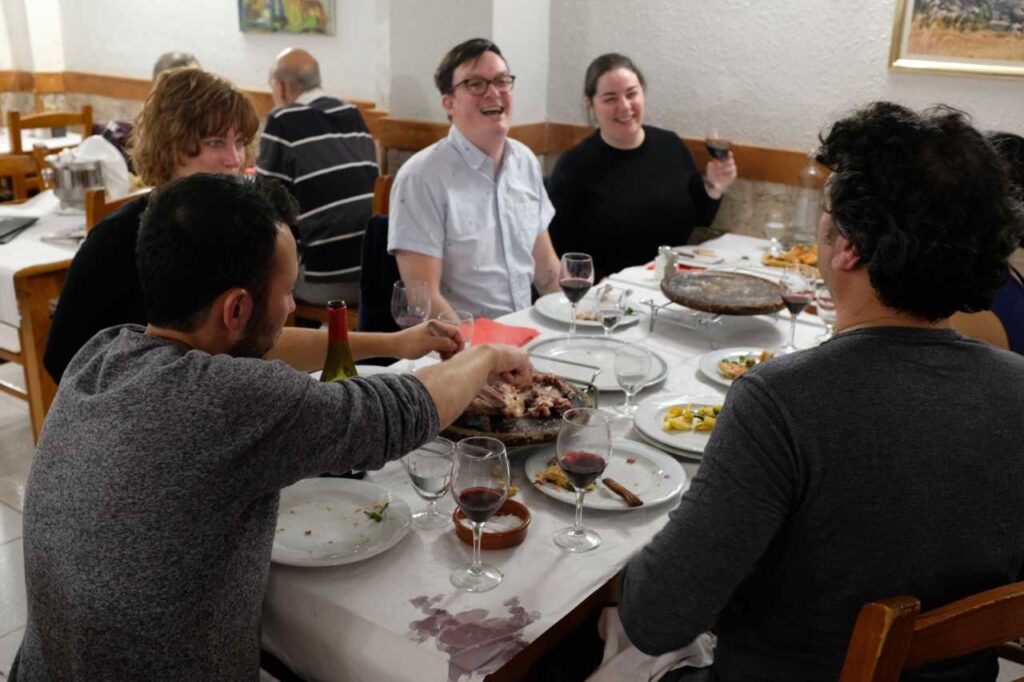The first thing that comes to mind when thinking of Spanish food is probably a beautiful paella, with lots of mussels and shrimps, or even some tapas, or a dark-red Ibérico ham over bread, or a crunchy croquette.
Well, although those dishes are the most famous ambassadors of our cuisine, there’s much more to explore for meat-lovers in Spain. Yes, Spanish food has more than its fair share of red meat, and we are going to share the meals you can’t afford to miss!
Oxtail Stew
When winter comes to the Peninsula, we crave hearty, filling meals. A good “rabo de toro” is essential to keep you going through the cold days, which has various preparations, from de “Cordobés” style to more avant-garde food experience. As we say here, a stew “can take it all,” from spices to some Port wine, this dish is great and you can find it in almost every Spanish city!
Fricandó
An original Catalan recipe that has spread throughout the country is the “fricandó.” This dish consists of several fine-layered fillets that are cooked with garlic, almonds, walnuts, peppers, and tomatoes. There’s no way to go wrong here– you can even add whatever garnish you want, from carrots to mushrooms or potatoes. Everything goes well!
PRO TIP: In Barcelona, there is always a frincadó option in the “menú del día” of the restaurants in the city.
Cecina de León
Had your share of “jamón’ and “chorizo” in your trip? It may be time to try some “Cecina,” a cured-beef leg, that is one of our most unknown cold cuts, yet stillone of the best. IMade from either ox or cow, it is typically cured for 3 years and then smoked for 15 days. Cecina comes from the León mountains in the Northwest and you can find several pairings for it from croquettes to sandwiches. Our recommendation is to have it like the photo below, with some olive oil and nothing more.
Chuletón de Vaca Vieja
Finally, you shouldn’t leave Spain without trying our famous “Chuletón” (our local version of a ribeye). This beef cut originated in the Northern part of the country, and is grilled on a hot volcanic stone, always medium-rare, and served with smoked sea salt.
“Vaca vieja”, literally means “old cow”, because the best Chuletones come from cows that live up to 6 years, so the meat becomes very tender, marbled, and delicious. A good Chuletón can weight as much as 4 and a half pounds, and is a feast for both your eyes and your belly!
Now you’re probably wondering where to try these meaty, tasty dishes, right? Well, we have figured that out for you! Check out our Spanish meat Lover’s Journey to discover the pleasures to be found from a delectable Spanish steak!

